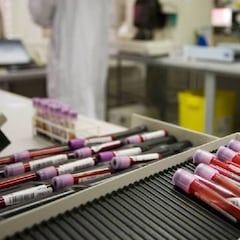A doctor stops his brain cancer by undergoing his own treatment
Richard Scolyer was diagnosed with glioblastoma, a brain cancer that has no cure. One year later, “there are no signs of recurrence.”

It’s been a year since Richard Scolyer’s life was turned upside down. The 57-year-old Australian doctor was in Poland when he suddenly suffered a seizure. The diagnosis: glioblastoma, the deadliest type of brain cancer with no cure. Almost twelve months later, Scolyer has managed to stop the progression of the tumor. What happened?
Upon learning about the disease, the doctor underwent an experimental treatment based on his own research on melanoma. Scolyer received immunotherapy designed to cure melanoma before undergoing surgery to remove the tumor. In addition, the doctor received a type of personalized vaccine that increased the effectiveness of the treatment.
A year later, the doctor celebrated the achievement on social media. “I had a brain MRI scan last Thursday looking for recurrent complications of glioblastoma (&/or treatment). I found out yesterday that there is still no sign of recurrence. I couldn’t be happier!!!!!” he explained on his Twitter account. “Thank you to the fabulous team looking after me so well especially my wife Katie & wonderful family!”
I had brain #MRI scan last Thursday looking for recurrent #glioblastoma (&/or treatment complications). I found out yesterday that there is still no sign of recurrence. I couldn’t be happier!!!!!
— Professor Richard Scolyer AO (@ProfRScolyerMIA) May 13, 2024
Thank you to the fabulous team looking after me so well especially my wife Katie &… pic.twitter.com/WdqZKLDvge
“People were nervous because it could actually cause my life to end more quickly. But when you’re faced with certain death, it’s a no-brainer for me,” said the University of Sydney professor. He hopes that first-of-its-kind treatment will difference for other cancer patients.
However, it is still early to talk about a complete cure. In addition, the man suffered several side effects during treatment, such as liver difficulties or epileptic seizures.
What is glioblastoma?
According to the Mayo Clinic, glioblastoma is a type of cancer that begins with the development of cells in the brain or spinal cord, in which the cells reproduce rapidly, invading healthy tissues. It develops at any age, but is more common in adult men.
Related stories
Symptoms of glioblastoma include worsening headaches, nausea and vomiting, blurred or double vision, and seizures. “There’s no cure for glioblastoma [...] treatments might slow cancer growth and reduce symptoms,” the aforementioned website states.
Treatments to slow the development of glioblastoma typically include surgery to remove it, radiation therapy, chemotherapy, tumor field therapy, targeted therapy, and clinical trials. Scolyer was submitted to the last of them.


Complete your personal details to comment